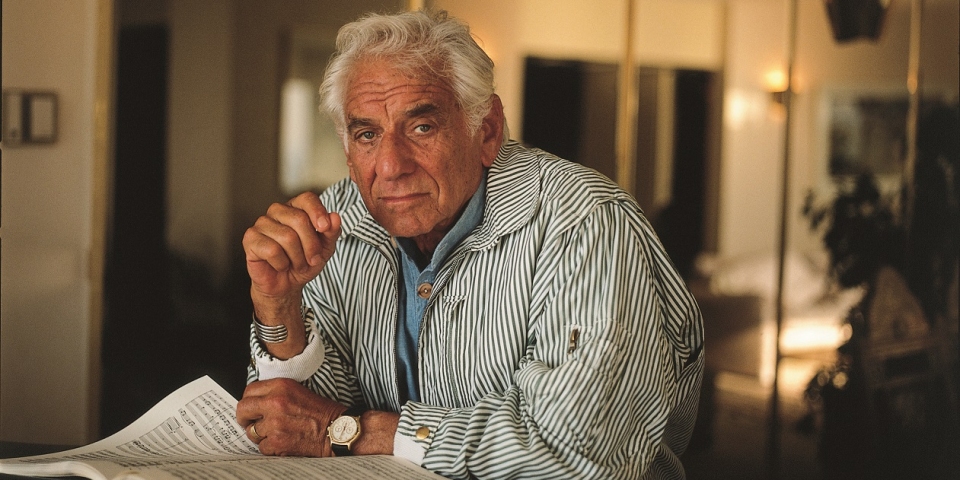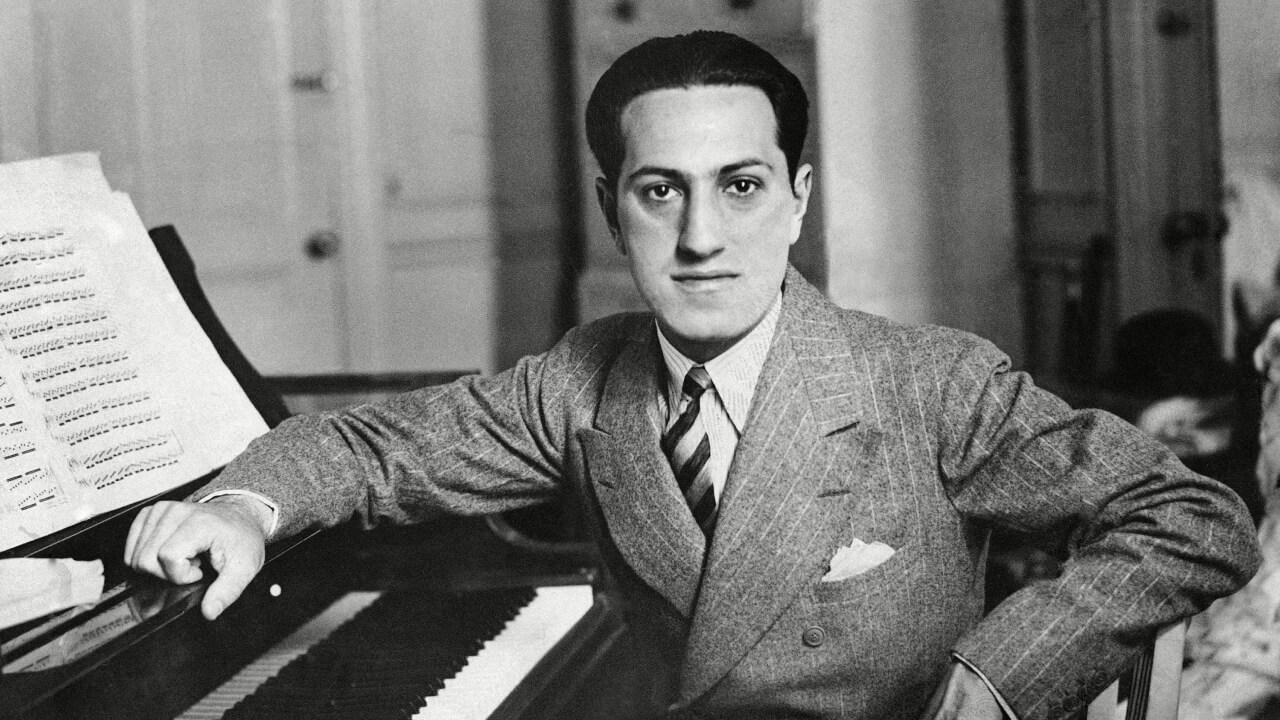Influences Jazz
Conservatoire de musique de Montréal

The celebrated Rhapsody in Blue by Gershwin, arranged for woodwinds and piano by Reinhard Gutschy, is at the heart of this program with a “jazz twist” that will unite the music of Barber, Ravel and Françaix. With the support of the pianist Philip Chiu, the musicians will delight your eyes and ears with an exhilarating end to the season!
A word from our artistic director
A word from our Artistic Director
Program
Leonard Bernstein
: Candide (ouverture)Arrangement :
pour quintette à ventJean Françaix
: L’Heure du berger1. Les vieux beaux*
2. Pin-up girls
3. Les petits nerveux*
*free translation
I - The Aging Dandies
III - The Jittery Little Guys
George Gershwin
: Porgy and BessPause
: PauseSamuel Barber
: Summer MusicGeorge Gershwin
: Rhapsody in Blue for quintet and pianoArrangement :
GutschyGuest artists

Philip Chiu
Winner of the 2023 JUNO award for Solo Classical Album of the Year, Canadian pianist Philip Chiu offers pianistic brilliance, engaging storytelling, and a welcoming stage presence that favours openness, authenticity, and connection with audiences. Described as “a pianist-painter who transforms each musical idea into a beautiful array of colours" (La Presse), Philip has become one of Canada’s leading musicians through his love of music and his passion for creation and communication.
Philip concertizes extensively as soloist and chamber musician and has performed solo recitals, concerti and chamber music concerts in most major venues across Canada, as well as in France, Japan and the United States. Chamber music partners have included James Ehnes, Emmanuel Pahud, Regis Pasquier, Noah Bendix-Balgley, Bomsori Kim, Johannes Moser, and the New Orford String Quartet; he also has a longstanding violin-piano duo with Jonathan Crow. Philip is a veteran touring artist of Prairie Debut, Jeunesses Musicales Canada, and Debut Atlantic, having toured the country 14 times with their generous support.
His in-progress trio of solo recordings with ATMA Classique (the first of which, Fables, was awarded a 2023 JUNO award) presents original compositions by Barbara Assiginaak and Alice Ping Yee Ho inspired by, and presented alongside, the music of Ravel and Debussy. Other recent recording projects include John Burge’s 24 Preludes for Solo Piano (Centrediscs), Cavatine (ATMA) and Tapeo (ATMA) with cellist Cameron Crozman, and Night Light (Leaf Music) with flautist Lara Deutsch.
Philip is represented by Andrew Kwan Artists Management.
About the works
Candide (ouverture)
Written by Lillian Hellman (libretto) and Leonard Bernstein (music), Candide is an operetta based on Voltaire’s eponymous philosophical tale, published in 1759, and premiered on Broadway in 1956. The story serves as a critique of philosophical movements of the time, featuring several characters including Candide, an illegitimate child nicknamed “the optimist”; his cousin and love interest Cunegonde, the main character of the narrative; Martin, Candide’s travel companion; and Pangloss, the philosophy teacher of both Candide and Cunegonde.
From the very first notes of its Overture, Bernstein skillfully introduces the main themes and melodies that run throughout the work. While the stage production was not warmly received at its premiere, Bernstein’s music immediately caught the attention of critics. Fortunately, less than a month later, the Overture was performed at a concert by the New York Philharmonic, and since then, this brilliant piece has continued to resonate in the world’s greatest concert halls
L’Heure du berger
A prolific 20th-century French composer, Jean Françaix (1912–1997) devoted a significant portion of his work to wind instruments. In his youth, he crossed paths with several prominent composers of the time, including Nadia Boulanger, Maurice Ravel, Henri Tomasi, Igor Stravinsky, and Francis Poulenc— all of whom left a strong imprint on his compositional style. Françaix wrote over two hundred works, ranging from concert music (chamber works, concertos, oratorios, operas) to film scores.
L’Heure du berger, composed in 1947 first for strings and later adapted for winds and piano, paints whimsical scenes from a Parisian café of the same name — one that evokes the spirit of the Belle Époque. The distinctive personalities of the Pine-up Girls, the Petits nerveux, and the Beaux vieux are cleverly portrayed through Françaix’s writing, which, though at times sensual, remains irresistibly humorous throughout.
Porgy and Bess
George Gershwin’s opera Porgy and Bess (1935), based on the play Porgy by Dorothy and DuBose Heyward, stands as one of the most significant lyrical works in the American 20th-century repertoire. The opera tells the story of the harsh lives of African Americans living in the fictional neighborhood of Catfish Row, South Carolina, during the early 1930s. It features four main characters: Porgy, a crippled Black beggar; Bess, the woman he loves; Crown, Bess’s violent lover; and Sportin’ Life, a drug dealer who tries to lure Bess into a life of vice and prostitution.
With this work, Gershwin created what many consider a lyrical masterpiece, skillfully blending European orchestral techniques with American jazz and popular music of the time. Since its premiere, the opera’s popularity has far transcended the boundaries of the classical stage, thanks in large part to its iconic aria Summertime, which has been interpreted by some of the greatest jazz voices of the 20th century.
Rhapsody in Blue for quintet and piano
Written in 1924 for solo piano and jazz ensemble, then re-orchestrated by Ferde Grofé for symphony orchestra in 1942, Rhapsody in Blue stands among the most iconic works in the repertoire, beautifully blending the best of jazz and the symphonic world. It is without a doubt Gershwin’s most popular composition, one that played a key role in establishing his reputation as a major American composer. There is no question that Disney’s adaptation of this Rhapsody in the feature film Fantasia 2000 has helped sustain its popularity nearly a century after its creation.
Summer Music
Summer Music, by Samuel Barber, fully belongs to the tradition of atmospheric nocturnal music. While one may occasionally hear echoes of Ravel — or even Bartók — the rhythmic language remains distinctly American. Summer Music was composed between 1955 and 1956, during the period when Barber was working on his first large-scale opera, Vanessa. Perhaps one can catch glimpses of melodic outpourings that might have emerged from that same creative well? It’s hard to say: Barber was, above all, a melodist — a trait beautifully highlighted by the rhapsodic flights and more modern harmonic explorations in the work.
To reveal the seriousness that underlies the piece — light, but never trivial — its single-movement form reflects the pleasure that intellect can bring to refined entertainment.
A few words about the composers presented

Samuel Barber
Samuel Osborne Barber was born on March 9, 1910, in West Chester, Pennsylvania.
He began composing at the age of seven and later studied at the Curtis Institute in Philadelphia before becoming a fellow of the American Academy in Rome in 1935. The following year, he wrote his String Quartet in B minor, whose second movement he later arranged — at the suggestion of Arturo Toscanini — for string orchestra under the title Adagio for Strings, and later for choir as Agnus Dei. This movement went on to achieve great popularity.
The widespread acclaim of the Adagio has somewhat overshadowed the rest of his work. None of his other pieces achieved quite the same level of fame, though many are still regularly performed and recorded. Nevertheless, Barber is regarded as one of the most gifted American composers of the 20th century.
He steered clear of the experimental trends followed by many of his contemporaries, favoring more traditional harmonies and forms. His music is melodic and often described as neo-Romantic, although some of his later works — notably the Third Essay for Orchestra and Medea's Dance of Vengeance — display a masterful use of percussive effects, modernist gestures, and neo-Stravinskian brilliance.

Leonard Bernstein
Leonard Bernstein, born Louis Bernstein on August 25, 1918, in Lawrence, Massachusetts (USA), and died on October 14, 1990, in New York, was an American composer, conductor, and pianist.
He was influenced by the works of Western composers such as Pyotr Ilyich Tchaikovsky and Gustav Mahler. Bernstein is also well known for his long-standing artistic partnership with dancer and choreographer Jerome Robbins, both in theatre and on screen. Together, they collaborated notably on the ballet Fancy Free in 1944 and the musical West Side Story in 1957, both of which gained widespread fame through their film adaptations in 1961 and again in 2021.
Bernstein served as the music director of the New York Philharmonic for eleven years.
His life and career were portrayed on screen by American actor Bradley Cooper in the 2023 biographical film Maestro.

Jean Françaix
Jean Françaix (1912–1997) was one of the most prolific and distinctive French composers of the 20th century. A virtuoso pianist and an orchestrator of rare finesse, he stood out for a body of work characterized by the clarity of the neoclassical style and a discreet yet consistently controlled sense of humor.

George Gershwin
Son of Russian Jewish immigrants, born in Brooklyn in 1898 and passed away in 1937, George Gershwin is considered one of the greatest jazz composers and performers of the 20th century. A concert pianist and successful composer, he surrounded himself with the greatest artists of his time (including Ella Fitzgerald, Louis Armstrong, Herbie Hancock, Alban Berg, Maurice Ravel, Kurt Weill, and Sergei Prokofiev) and had a brief but brilliant career.
